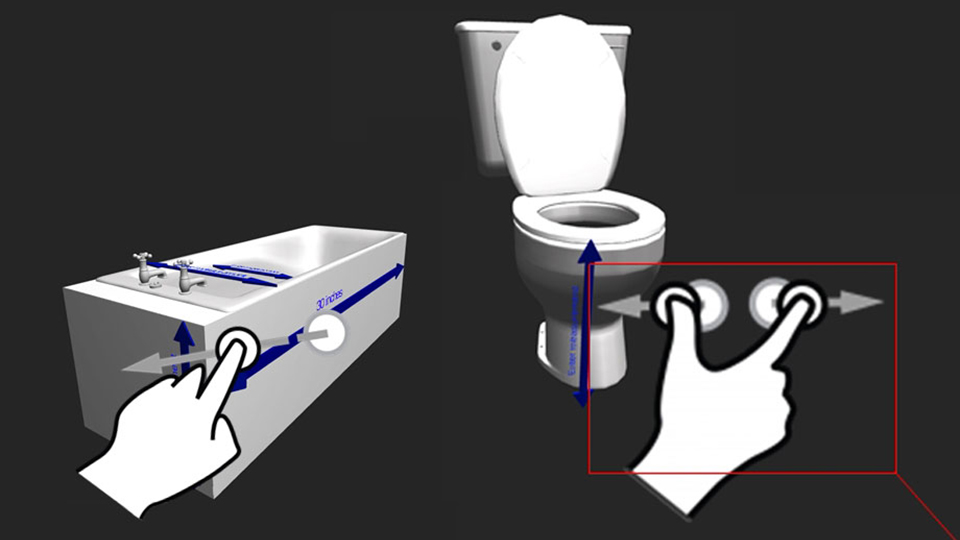People prone to falls could be safer in their homes, thanks to smart 3D software to help healthcare workers measure their surroundings.
With more people older than 80 around than ever before, falls and injuries are costing the NHS an estimated £2.3bn a year.
People at extra risk of falls have themselves and their homes measured up for aids like bathroom grab rails, ramps, wheelchairs and walkers. But 50% of this equipment never gets used, partly because it’s a bad fit.
Computer scientists at Brunel University London tested a mobile 3D visualisation app that guides occupational therapists through measuring. It could help save billions on health care, make homes less hazardous and give people safer, more independent, better quality lives.
“Having technology that addresses issues with prescribing the right assistive equipment could have significant cost-saving implications for the health and social care system,” said Brunel’s Dr Arthur Money.

The 3D-MAP under development at Brunel shows 3D models of the things most linked to home falls – bed, bath, toilet, chair and stairs. Audio instructions and arrows pinpoint exactly where to measure specific pieces of furniture and users can rotate the models and zoom in and out to get a better look.
The study in Health Informatics Journal found that experienced occupational therapists said a prototype of the tool helped them better understand the precise measurement locations than the NHS 2D paper diagrams. It could be used to help train junior occupational therapists and help OTs hand over work to colleagues, they suggested.
Using new technology to solve longstanding problems in health care is part of a government push aimed at ‘liberating the NHS’ by cutting bureaucracy.
“It is a promising result,” said Dr Money, highlighting that one of the key challenges is the lack of mobile touch screen devices among clinicians.
A larger scale study is now underway to compare measurements taken with 3D-MAP with ones using paper guidance in terms of accuracy and consistency. Further research will look into whether patients themselves, plus family members and caregivers could benefit.
Mobile three-dimensional visualisation technologies for clinician-led fall prevention assessments is published in Health Informatics Journal.
The work is funded by The Royal Society
Reported by:
Hayley Jarvis,
Media Relations
hayley.jarvis@brunel.ac.uk